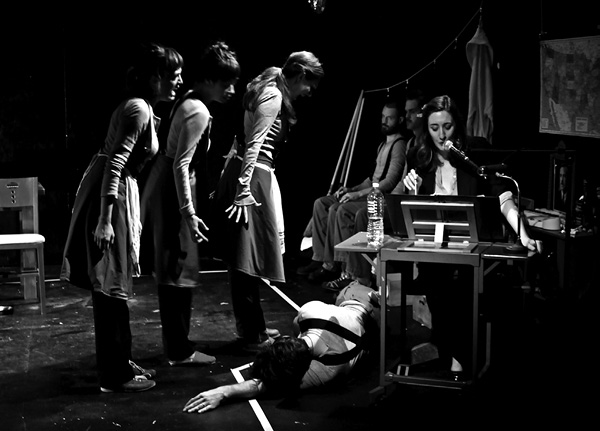
THE COMPLETE & CONDENSED STAGE DIRECTIONS OF EUGENE O’NEILL, VOLUME 1: EARLY PLAYS / LOST PLAYS
first performed on
September 8, 2011
Kraine Theater, New York, NY
performed 20 times in 2011
CHRISTOPHER LOAR
with the New York Neo-Futurists
602751183c602751183h602751183r602751183i602751183s602751183t602751183o602751183p602751183h602751183e602751183r602751183@602751183n602751183y602751183n602751183f602751183.602751183o602751183r602751183g
THE COMPLETE & CONDENSED STAGE DIRECTIONS OF EUGENE O’NEILL, VOLUME 1: EARLY PLAYS / LOST PLAYS
CHRISTOPHER LOAR
I first started playing around with Eugene O’Neill’s stage directions in 2009. I had recently joined the ensemble of the New York Neo-Futurists and was looking for a way to adapt one of my favorite plays, Long Day’s Journey into Night, into a short piece that could run in the Neo’s weekly “Too Much Light Makes The Baby Go Blind (30 Plays in 60 minutes).” The company’s non-illusory aesthetic of making theater with performers that are “who they are, where they are, and are doing what they are doing” provided the point of entry. If we couldn’t play characters, couldn’t manufacture emotions and couldn’t pretend we were anyone else but ourselves, then how could we possibly render the plays? By doing the stage directions and only the stage directions.
Eugene O’Neill’s stage directions are legendary; in them we find the unrequited dreams of a failed poet who became a Nobel Prize-winning playwright. After crafting a curious rendition of one pivotal scene in Long Day’s Journey into Night, I became more and more obsessed with O’Neill and his stage directions. I wondered if all of his plays could be broken down and staged without any dialogue at all. After plumbing the entire canon of his work, I learned just how paranoid he was: his meticulously prescribed stage directions proved to be a kind of insurance against anyone screwing his plays up, as if he wrote them in fear of actors. Isolating his work to just the material that is famously ignored provokes many interesting challenges in rehearsal. How does a person “get ready to crush her with the weight of his eloquence,” or “burst forth” or “throw himself into the easiest chair”? And, most importantly, can his plays be conveyed without the words of his characters? The interpretations are multitudinous. The opportunities for surprise (and failure) are infinite. “The Complete and Condensed Stage Directions of Eugene O’Neill Volume One: Early Plays / Lost Plays” is my first venture into adapting a famous American dramatist. It is a sampling of the earliest and most awkward works of a downtown NYC theater hero from the last century. As someone who once knew a little bit about O’Neill and then stumbled into addiction to him, I wanted to share my fascination with this very controlling and inspiring writer.